Why does my saddle lift up at the back? Part two
We are no longer building saddle trees, but we have two videos about how Western saddles fit horses available on our westernsaddlefit.com website.
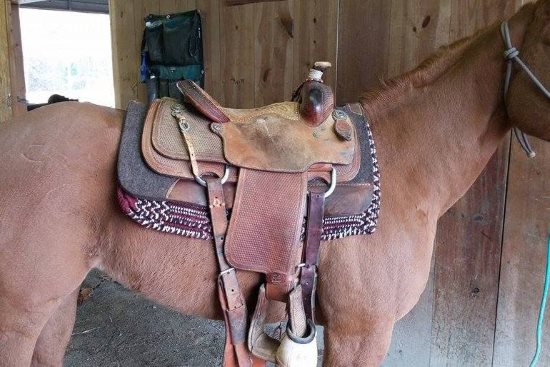
In our last blog post, we described the three most common reasons saddles lift up at the back. These next two reasons are not as common, but are still real. (We have to point out that this saddle is too far forward, sitting on the horse's shoulder blade. But even with it on a wider part of the horse, it still tilts forward and lifts up at the back on this horse.)
Bars are too narrow in the center
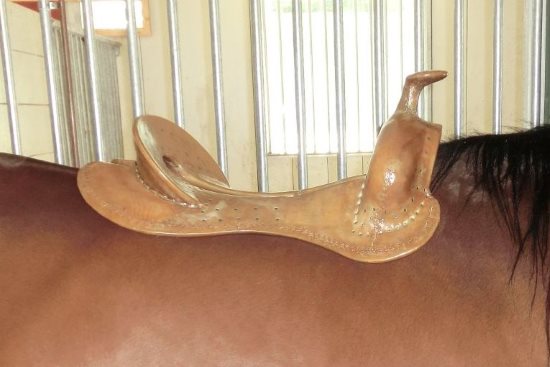
Looking at this picture, the first reaction is “it’s too wide so it’s falling down in front”.
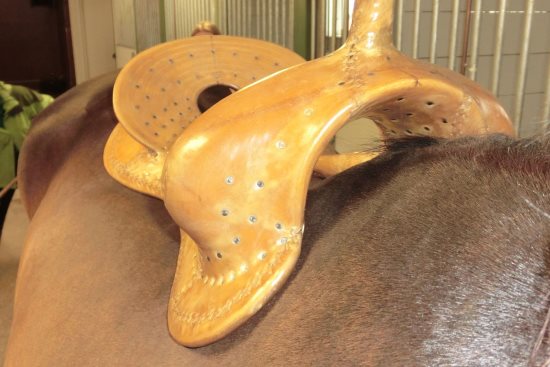
However, when you look more closely, the bar width and angle at the front are good, and there is still lots of clearance under the fork. So why is it lifted at the back?
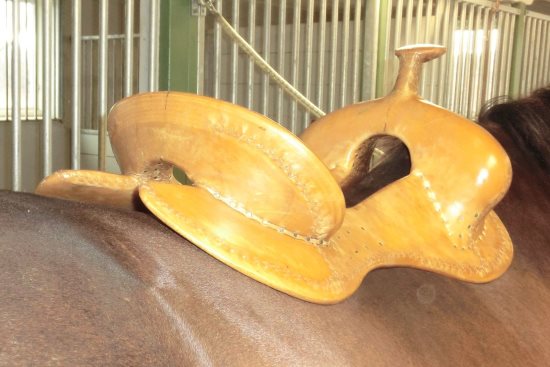
On closer inspection, the angle in the middle is too narrow so the edges of the bars are all that are contacting the horse there. It is acting the same as if there was too much rock in the bars because the tree is rotating around a fulcrum point, but this time problem isn’t rock in the bars. The “high point” in the center is because there is too narrow an angle in the center of the bar.
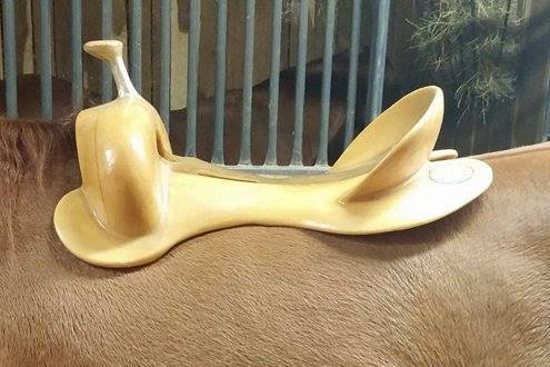
Here’s another example. Although in this case you can see that the front and the back of the bars have too much angle for this horse, the outside edge of the center of the bar is right down on the horse. Because we can’t look inside, we don’t know if the bar is at the right angle here for the horse, or maybe too steeply angled for even this horse. However, we can imagine what it would look like on a horse who fit the angles front and back. The angle at the center would be way too narrow.
This is probably a more common problem than we recognize, because we have come to understand that a lot of trees have too steep an angle in the center of the bar. It is because the majority of the twist occurs too far back on the bars compared to what the horse needs. Trees are likely made this way to accommodate the rider, who prefers the saddle to be narrow between their thighs. This narrow angle makes it easier to put in a comfortable ground seat for the rider. However, it results in bar edges that dig into the horse. If the discrepancy between horse and tree is enough, it actually causes the back of the saddle to lift off the horse. As you put weight in the saddle, the bar edges in the middle will press down, resulting in really high pressure areas. Not good...
Rigging way too far ahead
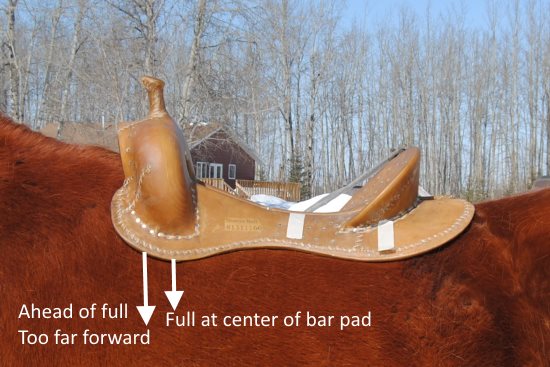
This last one is quite unlikely, but with the increase in the false idea that you have the have the cinch right behind the elbow in the (mythical) “girth groove”, riggings have to be placed more and more forward if the bar is to be kept behind the shoulder blade in its proper position, especially in horses with laid back shoulder blades. So if taken to an extreme, you can get riggings far enough ahead that the pull will actually be ahead of the center of the front bar pad. This results in the tip of the bars being pulled down which can lift the back of the saddle up. (Please ignore the tape on the tree. We were checking out something else that day…)
However, what happens when the saddle is ridden is that the weight in the saddle presses the back of the saddle down onto the horse. All that does is increase the pressure on the cinch, further pulling the front bar tips down into the horse’s shoulders. As we have said before, we recommend a 7/8 or ¾ rigging position. Even going as far forward as full can put too much downward pressure on the front bar tips, preventing the shoulders from slipping under them as the horse moves. Moving the rigging back a bit allows the shoulders to move more freely. And contrary to popular internet “rules”, it is the tree shape matching the horse’s back shape which determines the position of the saddle on the horse’s back, not the rigging position, so you don’t have to have the rigging this far forward.
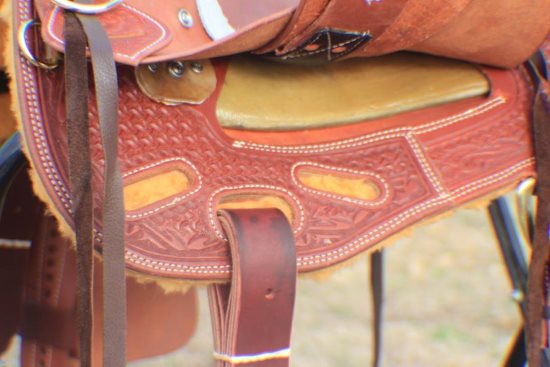
Here’s an example, again snaffled off the net so I have no idea of saddle brand, that could be misused in this way. From the angles of the cut outs for the latigos, it appears as though this is designed to be one of the V style riggings that are currently in vogue, where you put the second wrap through whichever cut out lets you line up the latigo so it is vertical when you finish cinching. However, if you use the front hole, you are pulling down ahead of the front of the center of the front bar pad, and that is going to cause problems. (Not sure what is up with the tree in that saddle. It sure looks “interesting”…)
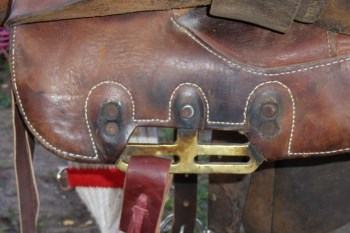 |
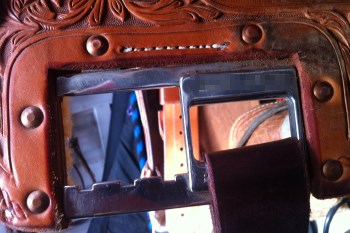 |
Here’s another couple examples that could cause problems that way, depending where the rigging plate is placed relative to the bar and where the latigos are set relative to the plate. If the plate is set relatively far forward and the latigos are attached in the forward position, the pull can be so far forward that it causes the saddle to lift up at the back. The other issue with these long rigging plates is that they have the real potential to dig into the horse at their corners, especially if the horse is doing a sharp bend toward that side. Again, since it is the tree shape matching the horse shape, not the rigging position, that keeps the saddle in position, we see no need for hardware like this.
So how do you tell which one or which combination of these factors is at work if your saddle lifts up at the back? And what can you do to correct it? Well, that will have to be in Part Three.
